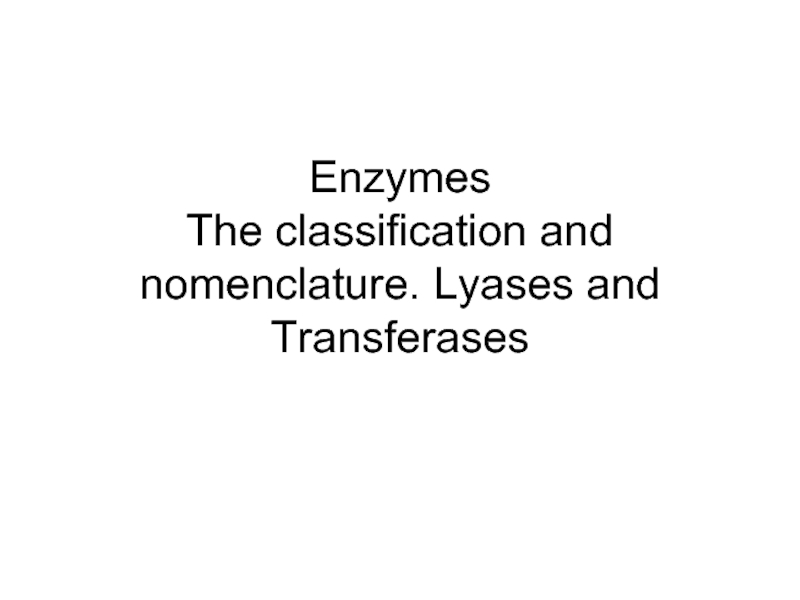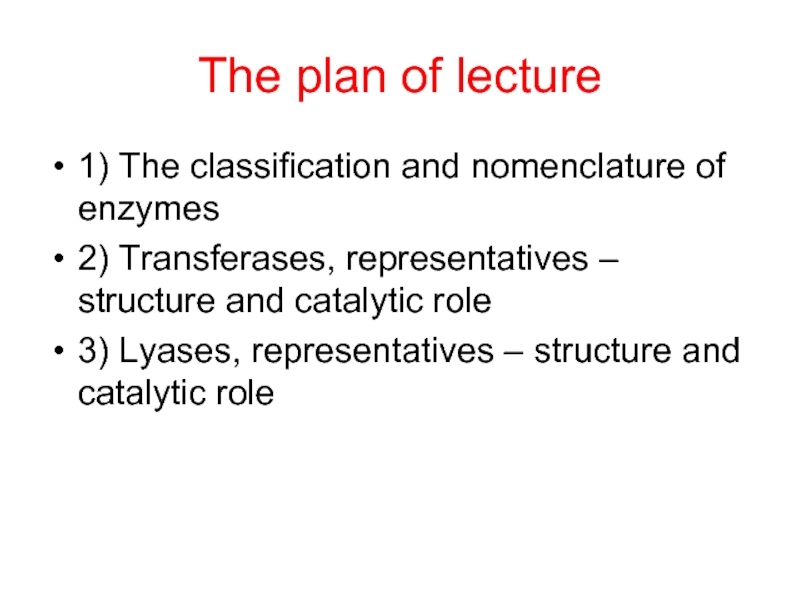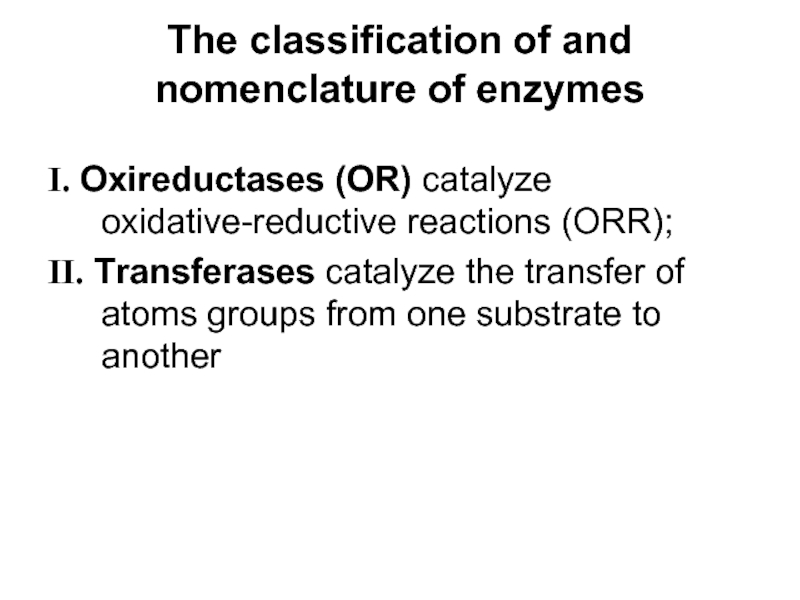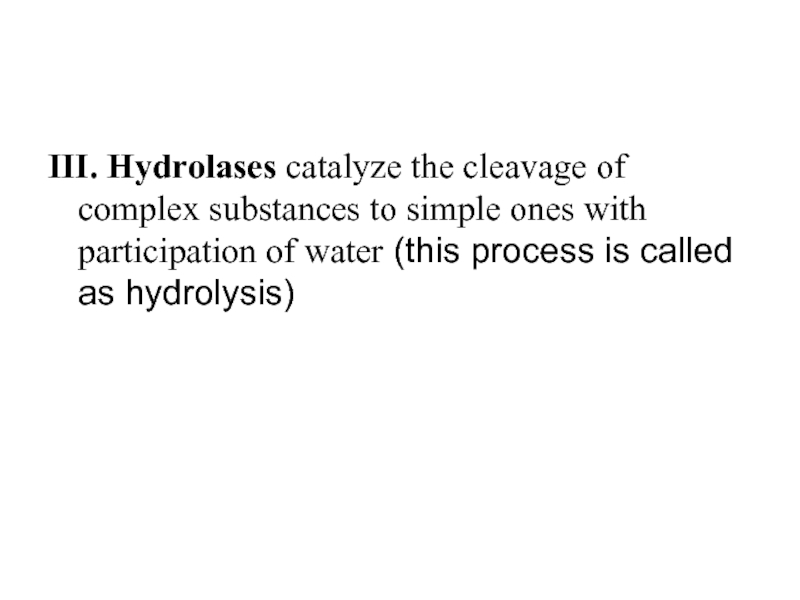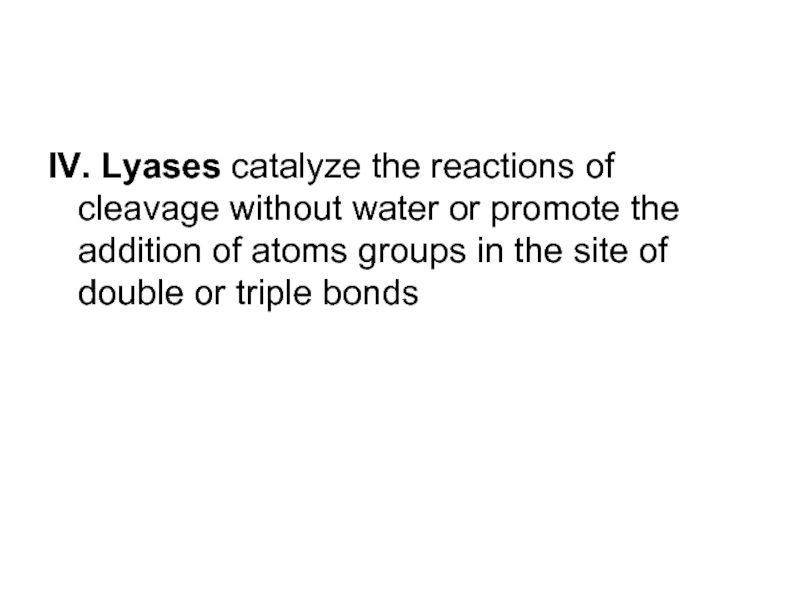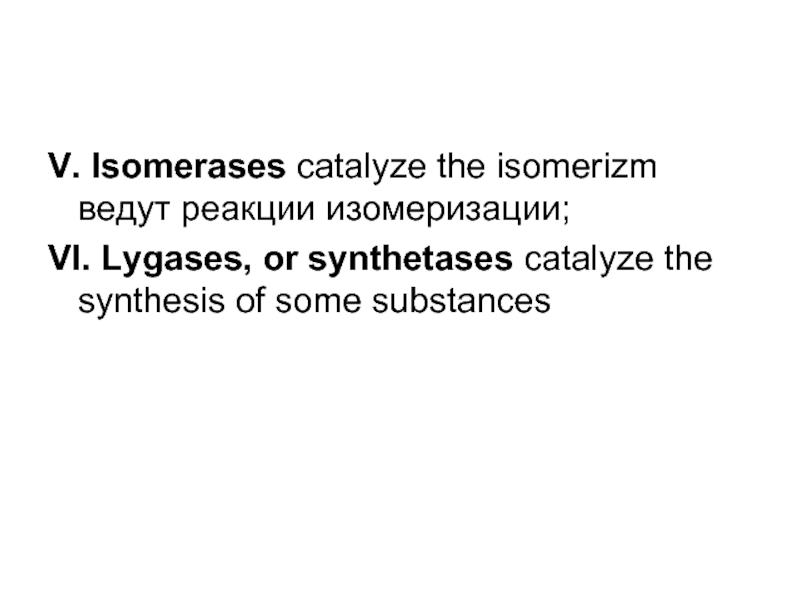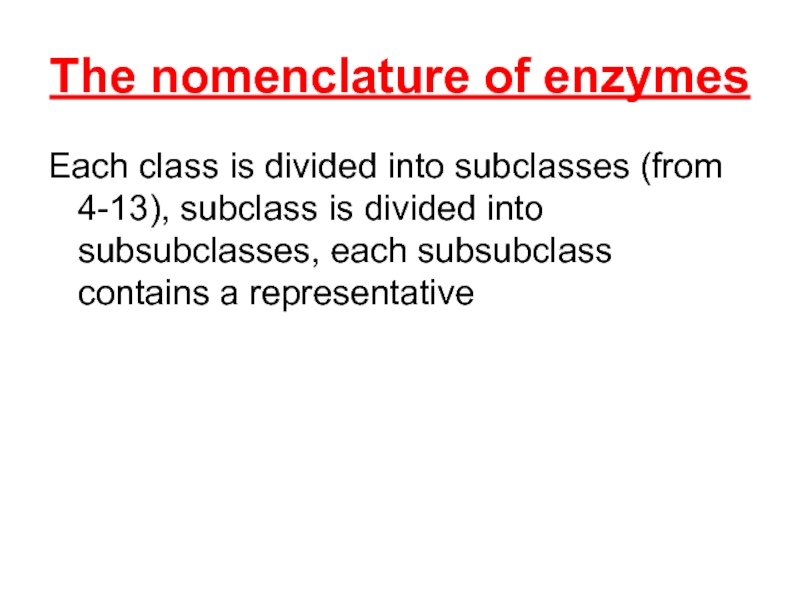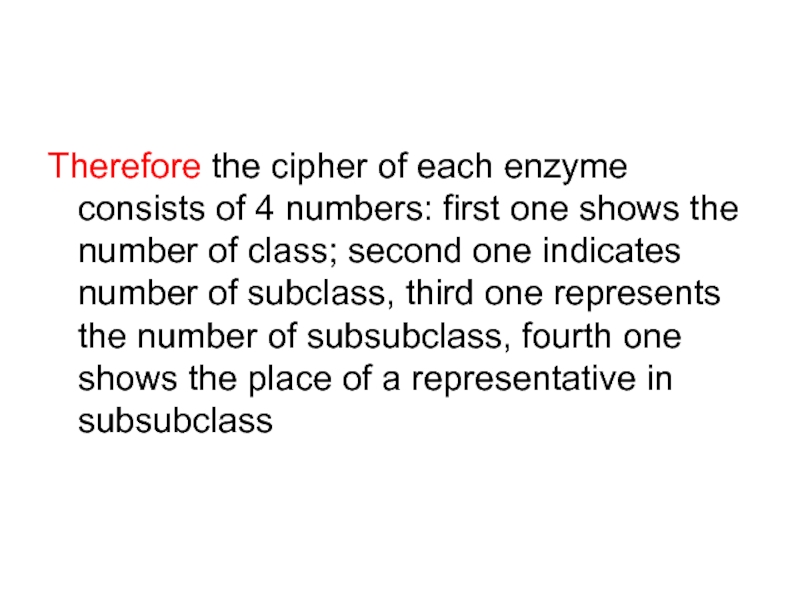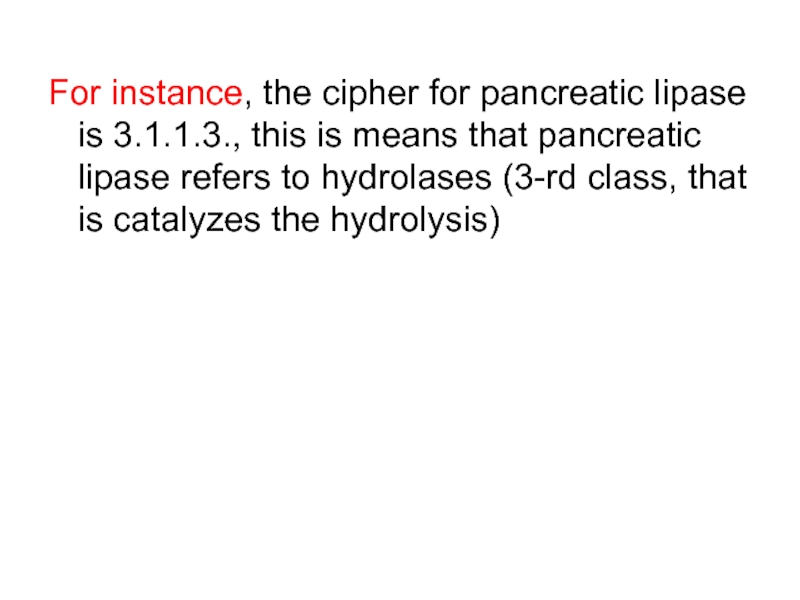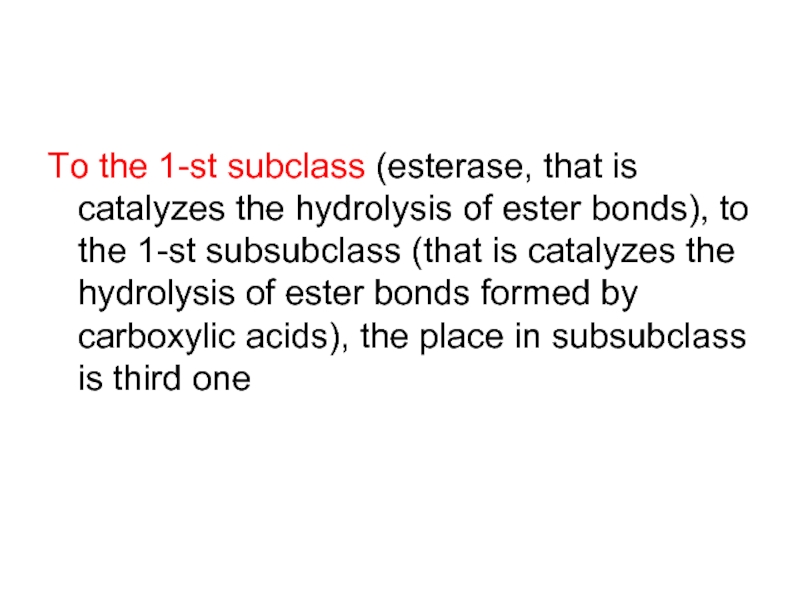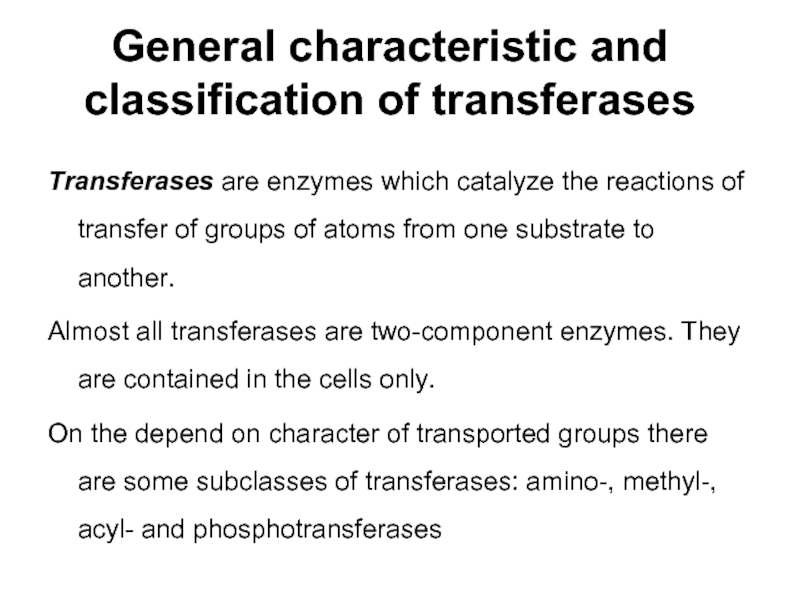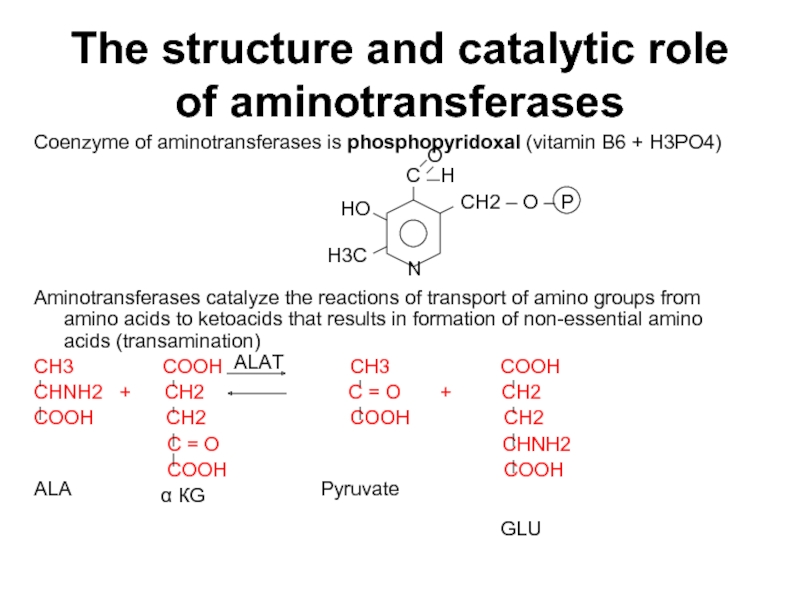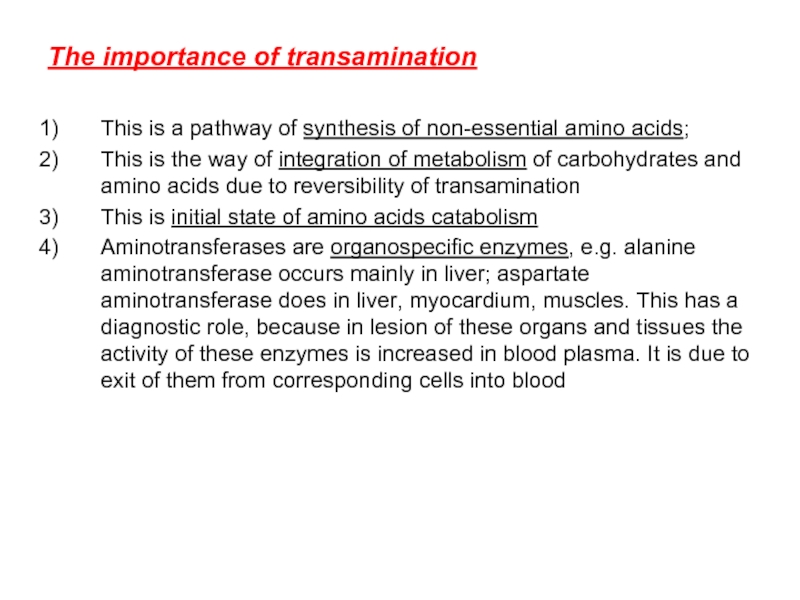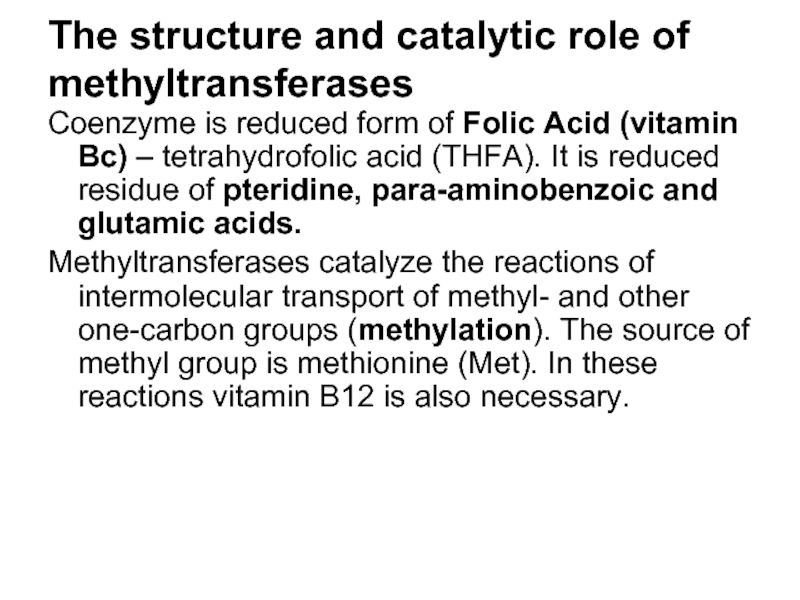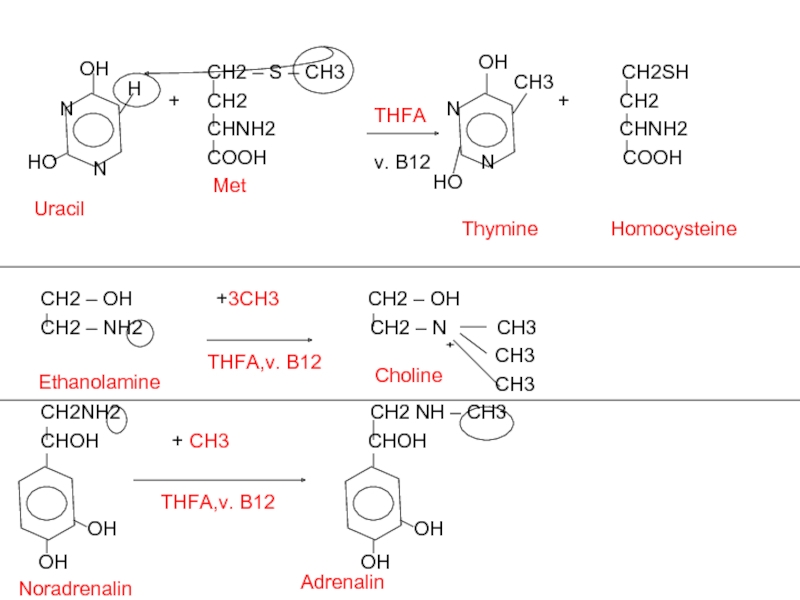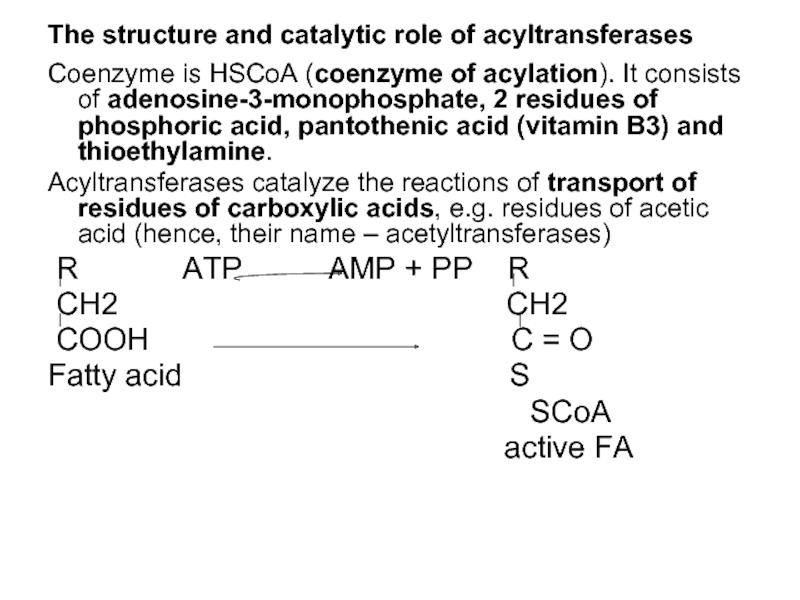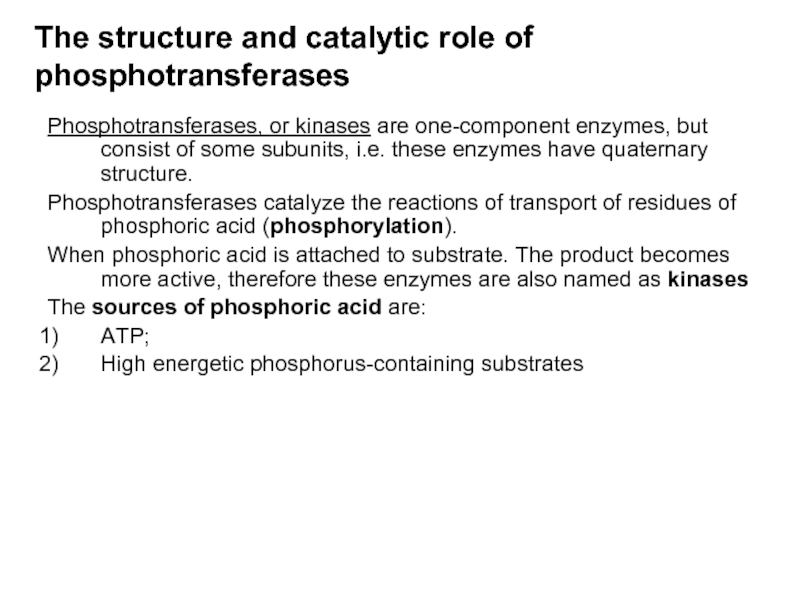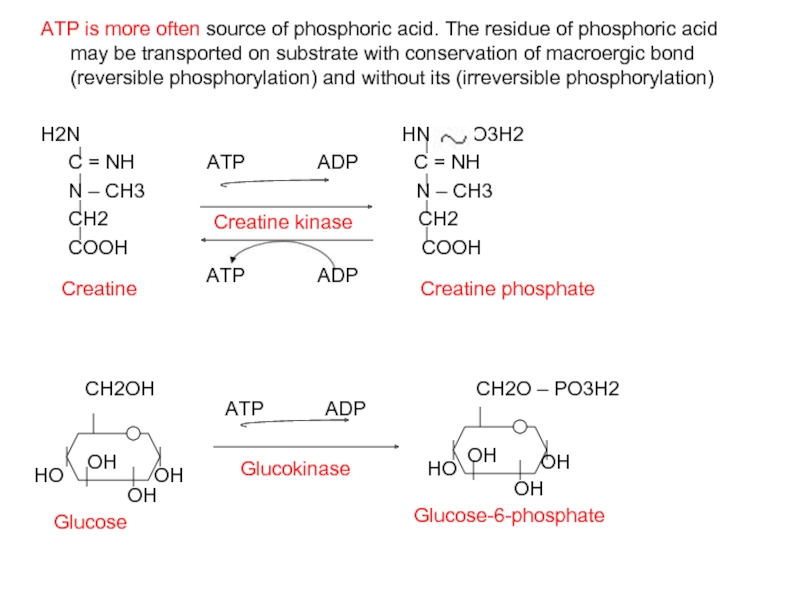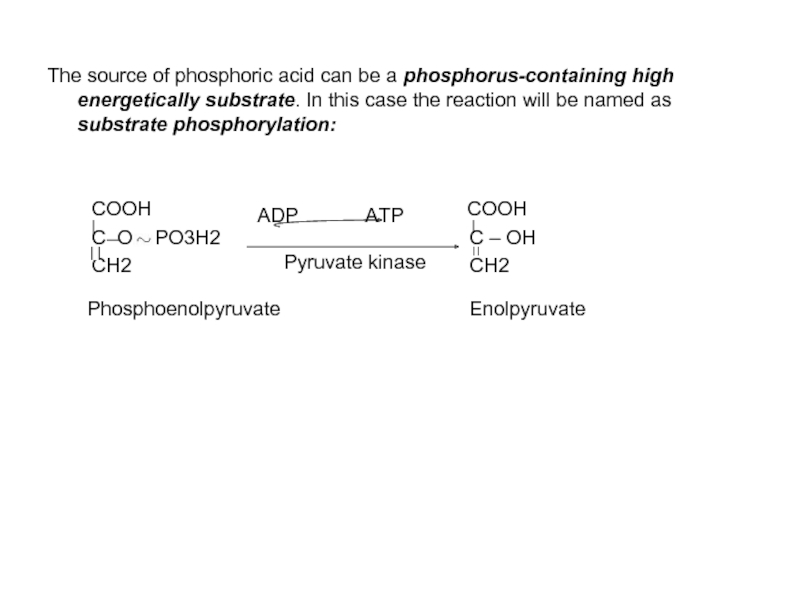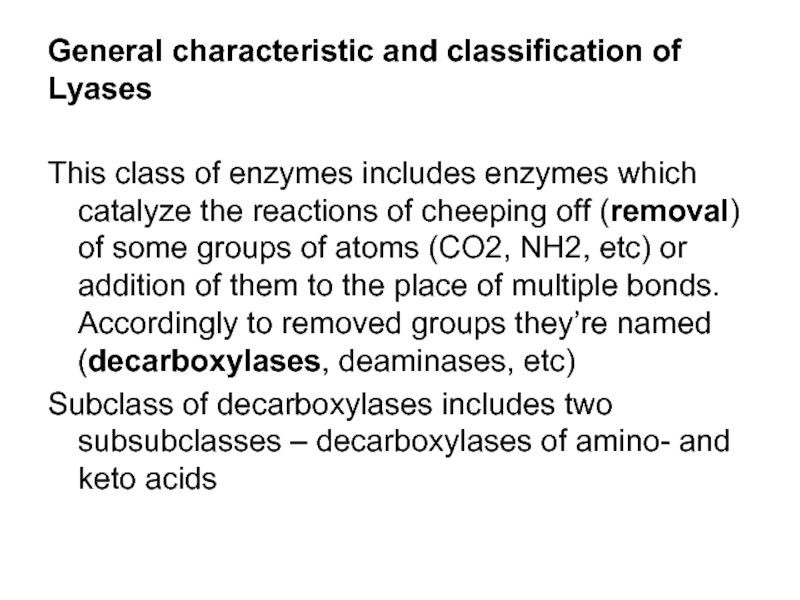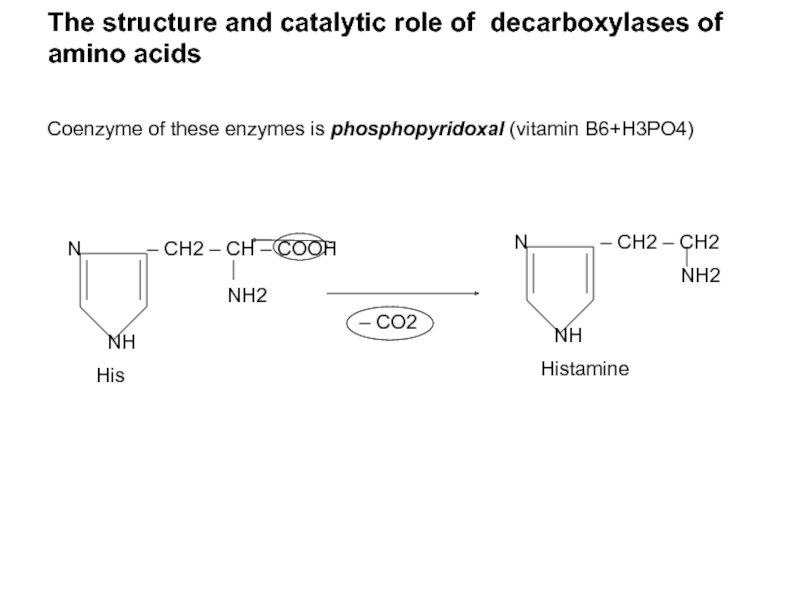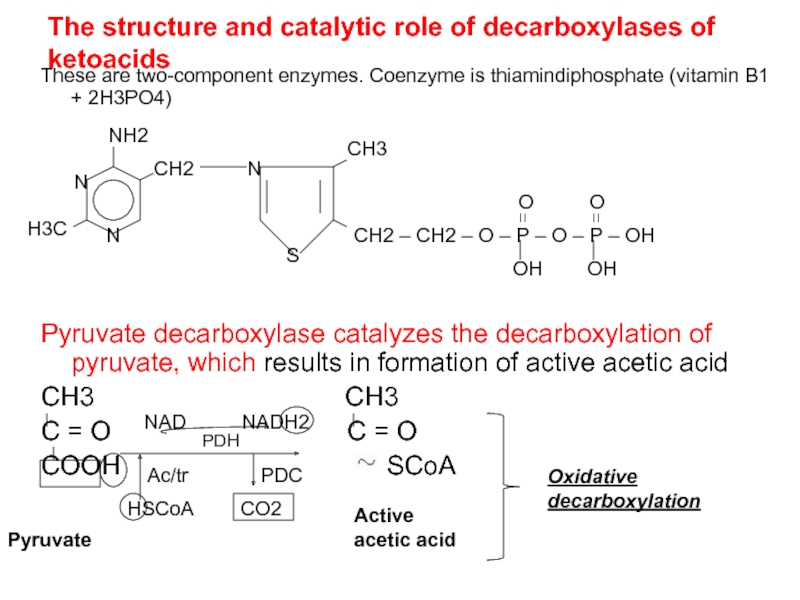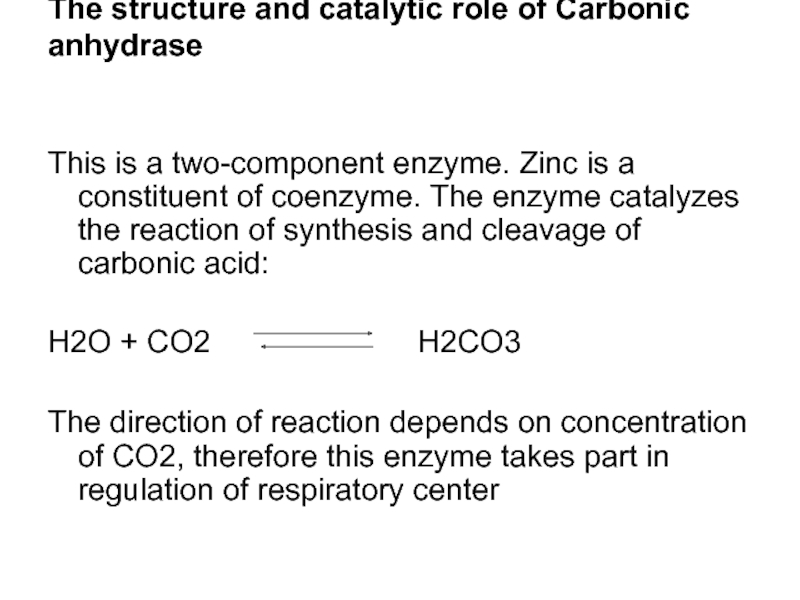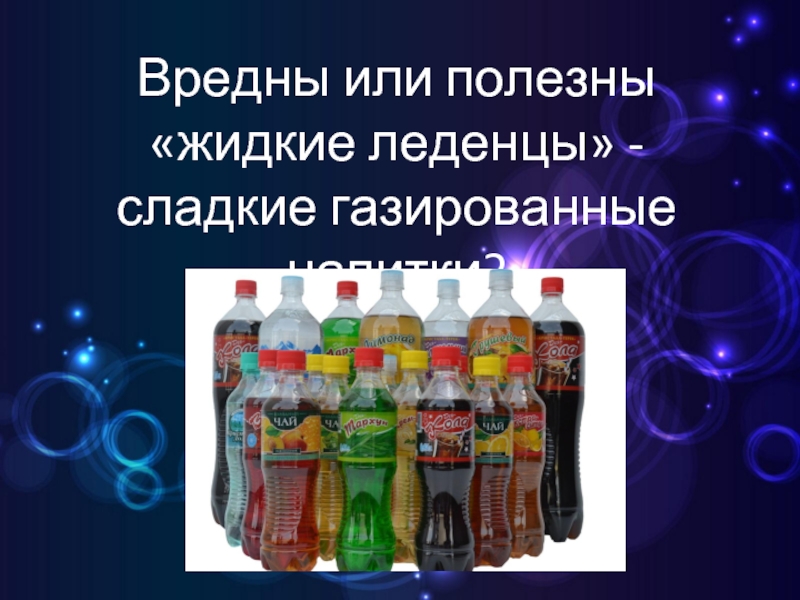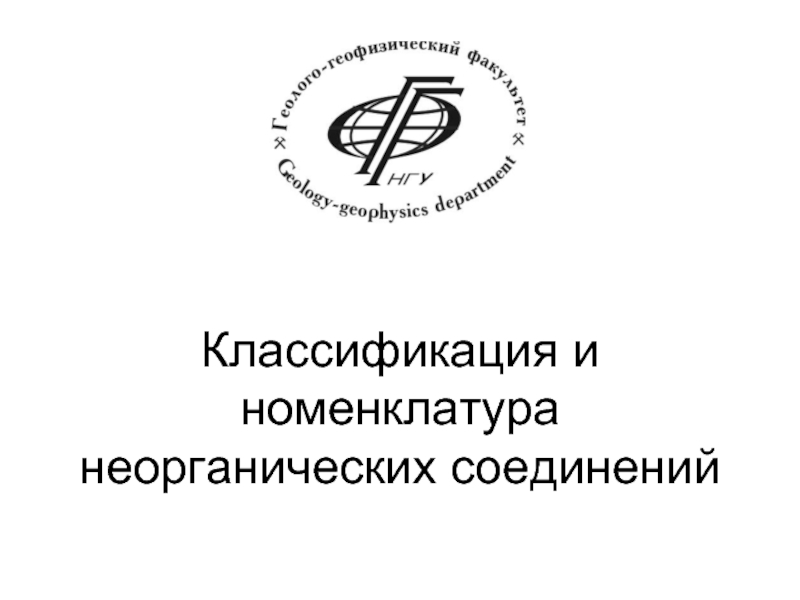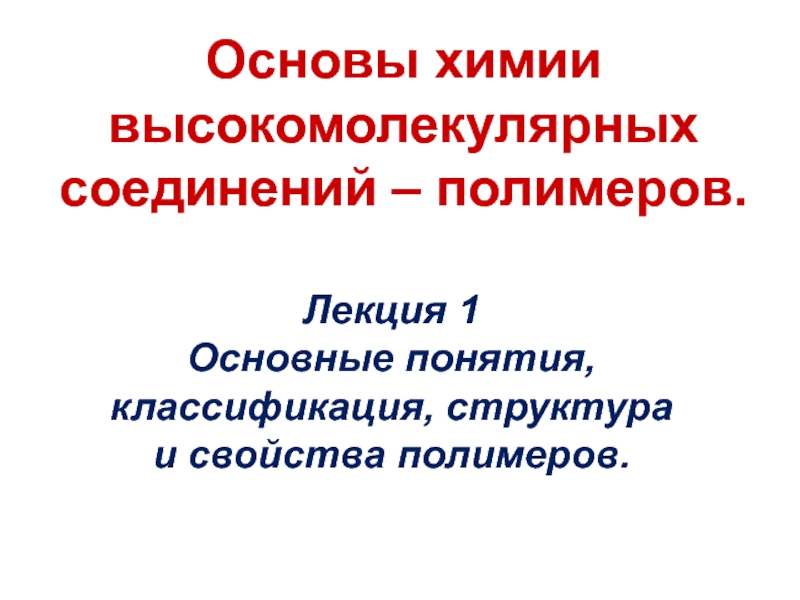- Главная
- Разное
- Дизайн
- Бизнес и предпринимательство
- Аналитика
- Образование
- Развлечения
- Красота и здоровье
- Финансы
- Государство
- Путешествия
- Спорт
- Недвижимость
- Армия
- Графика
- Культурология
- Еда и кулинария
- Лингвистика
- Английский язык
- Астрономия
- Алгебра
- Биология
- География
- Детские презентации
- Информатика
- История
- Литература
- Маркетинг
- Математика
- Медицина
- Менеджмент
- Музыка
- МХК
- Немецкий язык
- ОБЖ
- Обществознание
- Окружающий мир
- Педагогика
- Русский язык
- Технология
- Физика
- Философия
- Химия
- Шаблоны, картинки для презентаций
- Экология
- Экономика
- Юриспруденция
Enzymes The classification and nomenclature. Lyases and Transferases презентация
Содержание
- 1. Enzymes The classification and nomenclature. Lyases and Transferases
- 2. The plan of lecture 1) The
- 3. The classification of and nomenclature of
- 4. III. Hydrolases catalyze the cleavage of complex
- 5. IV. Lyases catalyze the reactions of cleavage
- 6. V. Isomerases catalyze the isomerizm ведут реакции
- 7. The nomenclature of enzymes Each class
- 8. Therefore the cipher of each enzyme consists
- 9. For instance, the cipher for pancreatic lipase
- 10. To the 1-st subclass (esterase, that is
- 11. General characteristic and classification of transferases
- 12. The structure and catalytic role of aminotransferases
- 13. The importance of transamination This is
- 14. The structure and catalytic role of methyltransferases
- 16. The structure and catalytic role of acyltransferases
- 17. The structure and catalytic role of phosphotransferases
- 18. ATP is more often source of phosphoric
- 19. The source of phosphoric acid can be
- 20. General characteristic and classification of Lyases
- 21. The structure and catalytic role of
- 22. The structure and catalytic role of decarboxylases
- 23. The structure and catalytic role of Carbonic
Слайд 2The plan of lecture
1) The classification and nomenclature of enzymes
2) Transferases, representatives – structure and catalytic role
3) Lyases, representatives – structure and catalytic role
Слайд 3
The classification of and nomenclature of enzymes
I. Oxireductases (ОR) catalyze
II. Transferases catalyze the transfer of atoms groups from one substrate to another
Слайд 4III. Hydrolases catalyze the cleavage of complex substances to simple ones
Слайд 5IV. Lyases catalyze the reactions of cleavage without water or promote
Слайд 6V. Isomerases catalyze the isomerizm ведут реакции изомеризации;
VI. Lygases, or synthetases
Слайд 7The nomenclature of enzymes
Each class is divided into subclasses (from
Слайд 8Therefore the cipher of each enzyme consists of 4 numbers: first
Слайд 9For instance, the cipher for pancreatic lipase is 3.1.1.3., this is
Слайд 10To the 1-st subclass (esterase, that is catalyzes the hydrolysis of
Слайд 11General characteristic and classification of transferases
Transferases are enzymes which catalyze the
Almost all transferases are two-component enzymes. They are contained in the cells only.
On the depend on character of transported groups there are some subclasses of transferases: amino-, methyl-, acyl- and phosphotransferases
Слайд 12The structure and catalytic role of aminotransferases
Coenzyme of aminotransferases is phosphopyridoxal
Aminotransferases catalyze the reactions of transport of amino groups from amino acids to ketoacids that results in formation of non-essential amino acids (transamination)
СН3 COOH CH3 COOH
СНNH2 + CH2 C = O + CH2
COOH CН2 COOH CH2
C = O CHNH2
СООН COOH
N
НО
Н3С
С
СН2 – О – Р
О
Н
АLА
α КG
Pyruvate
GLU
АLАT
Слайд 13The importance of transamination
This is a pathway of synthesis of non-essential
This is the way of integration of metabolism of carbohydrates and amino acids due to reversibility of transamination
This is initial state of amino acids catabolism
Aminotransferases are organospecific enzymes, e.g. alanine aminotransferase occurs mainly in liver; aspartate aminotransferase does in liver, myocardium, muscles. This has a diagnostic role, because in lesion of these organs and tissues the activity of these enzymes is increased in blood plasma. It is due to exit of them from corresponding cells into blood
Слайд 14The structure and catalytic role of methyltransferases
Coenzyme is reduced form of
Methyltransferases catalyze the reactions of intermolecular transport of methyl- and other one-carbon groups (methylation). The source of methyl group is methionine (Met). In these reactions vitamin B12 is also necessary.
Слайд 15
+ CH2 + CH2
CHNH2 CHNH2
COOH COOH
Met
СН2 – ОН +3CH3 CH2 – OH
СН2 – NH2 CH2 – N CH3
CH3
CH3
CH2NH2 CH2 NH – CH3
CHOH + CH3 CHOH
OH
H
HO
N
Uracil
ТHFA
v. B12
N
HO
N
CH3
OH
Thymine Homocysteine
+
ТHFA,v. B12
Ethanolamine
Choline
OH
OH
ТHFA,v. B12
OH
OH
Noradrenalin
Adrenalin
N
Слайд 16The structure and catalytic role of acyltransferases
Coenzyme is HSCoA (coenzyme of
Acyltransferases catalyze the reactions of transport of residues of carboxylic acids, e.g. residues of acetic acid (hence, their name – acetyltransferases)
R AТP АМP + РР R
CH2 CH2
COOH C = O
Fatty acid S
SCoA
active FA
Слайд 17The structure and catalytic role of phosphotransferases
Phosphotransferases, or kinases are one-component
Phosphotransferases catalyze the reactions of transport of residues of phosphoric acid (phosphorylation).
When phosphoric acid is attached to substrate. The product becomes more active, therefore these enzymes are also named as kinases
The sources of phosphoric acid are:
ATP;
High energetic phosphorus-containing substrates
Слайд 18ATP is more often source of phosphoric acid. The residue of
H2N HN PO3H2
C = NH АТP АDP C = NH
N – CH3 N – CH3
CH2 CH2
COOH COOH
СН2ОН СН2О – РО3Н2
Glucokinase
Glucose
Glucose-6-phosphate
Creatine Creatine phosphate
Creatine kinase
АТP АDP
НО
ОН
ОН
ОН
АТP АDP
НО
ОН
ОН
ОН
Слайд 19The source of phosphoric acid can be a phosphorus-containing high energetically
СOOH COOH
C O PO3H2 C – OH
CH2 CH2
АDP АTP
Pyruvate kinase
Phosphoenolpyruvate Enolpyruvate
Слайд 20General characteristic and classification of Lyases
This class of enzymes includes enzymes
Subclass of decarboxylases includes two subsubclasses – decarboxylases of amino- and keto acids
Слайд 21
The structure and catalytic role of decarboxylases of amino acids
Coenzyme of
N
NH
– CH2 – CH – COOH
NH2
His
– СО2
N
– CH2 – CH2
NH2
NH
Histamine
Слайд 22The structure and catalytic role of decarboxylases of ketoacids
These are two-component
Pyruvate decarboxylase catalyzes the decarboxylation of pyruvate, which results in formation of active acetic acid
СН3 СН3
С = О С = О
СООН SCoA
N
N
H3C
CH2
NH2
N
S
CH2 – CH2 – O – P – O – P – OH
O O
OH OH
CH3
NАD NADН2
PDH
PDC
СО2
HSCoA
Аc/tr
Pyruvate
Active acetic acid
Oxidative decarboxylation
Слайд 23The structure and catalytic role of Carbonic anhydrase
This is a
Н2О + СО2 Н2СО3
The direction of reaction depends on concentration of CO2, therefore this enzyme takes part in regulation of respiratory center
